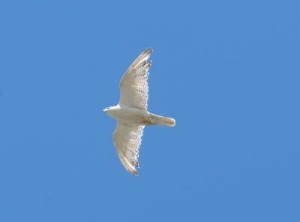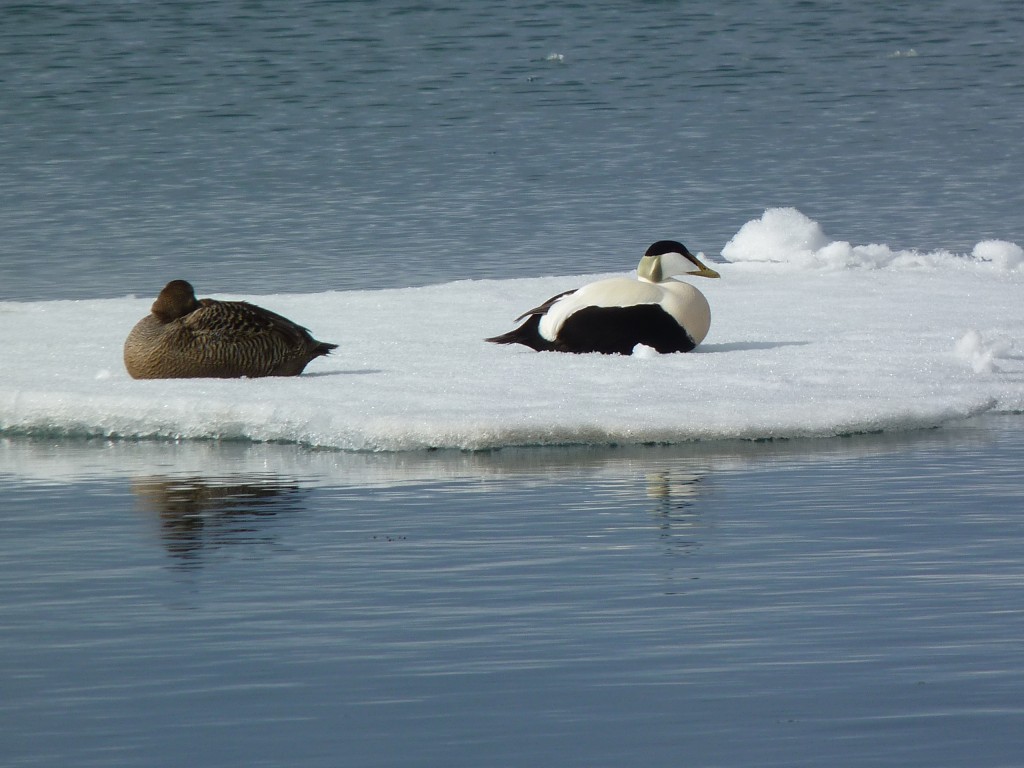Climate affects birds in Arctic Alaska
A new report from the Wildlife Conservation Society (WCS) finds that several species of birds which breed in the Arctic are vulnerable to climate change impacts between now and 2050.
The report looked at 54 species and found that two, the gyrfalcon and the common eider are likely to be “highly” vulnerable to expected impacts. Seven species would be “moderately” vulnerable, and five species are likely to increase and benefit from a warming climate.

This is a Gyrfalcon — one of two species found to be highly vulnerable to future climate change impacts in Arctic Alaska.
Credit: Steve Zack/ WCS
Arctic Alaska provides some of the most important breeding and stopping grounds for millions of birds from around the world. The region is also warming much faster than the rest of the globe.
The report, Assessing Climate Change Vulnerability of Breeding Birds in Arctic Alaska, co-authored by WCS Scientists Joe Liebezeit, Erika Rowland, Molly Cross and Steve Zack, details in-depth vulnerability assessments conducted on 54 species to help guide wildlife management in the region. The project was aided by the participation of more than 80 scientists who are experts on the species. The authors note that the assessments looked exclusively at the impacts of climate change experienced by breeding birds in Arctic Alaska, and not in other parts of their range.
“The primary value of this assessment is to tease out the underlying factors that make species more or less vulnerable to climate change,” said WCS Conservation Scientist and report co-author Joe Liebezeit. “Through this effort we can begin to prioritize subsequent management actions and identify data gaps. The results represent a starting point to help prioritize management actions and conservation planning efforts.”
The vulnerabilities were assessed using software developed by NatureServe that combines expert opinion of the sensitivity of a species to climate change (including traits like physiological tolerance to temperature change) and geospatial datasets of external factors including projected temperature and moisture changes across northern Alaska.
As Coordinator of the Arctic Landscape Conservation Cooperative, Greg Balogh looks at climate-driven changes. “This assessment tool melds computer modeling with expert opinion in a way not often realized,” said Balogh. “The insights and graphic depictions of climate change winners and losers is a real eye-opener. Land and resource managers would do well to pay attention to products like this as they think about how they conduct business in the future.” Among the commonalities seen among the more vulnerable species was a strong orientation to the coastline exposing them to climate-related changes in coastal disturbances linked to storms, erosion and ice cover. Generalist species (those that can adapt to a wide variety of conditions) were less affected and, in some cases, predicted to thrive in a warming climate.
Despite the extensive assessment carried out, the authors acknowledge that there is more work to be done.
“Our results tell only part of the climate change story for these species,” said WCS Conservation Scientist and report co-author Erika Rowland. “For example, several species rely on wetland habitats, which may dry out or shift locations in response to warming. Also, many species winter in places outside of Alaska and so climate change information from other regions will ultimately need to be woven into our understanding of vulnerability in Arctic Alaska for conservation planning and management.”
George Divoky, an ornithologist and climate observer who monitors black guillemots breeding on Cooper Island off the coast of Barrow, Alaska, the northernmost point in the USA, has also been telling me how changes in the sea ice have been making life difficult for “his” birds this year. The ice has been breaking up massively and very early in the season.
“Having the ice be breaking up this early and to such an extent could mean that there will be open water north of Cooper Island much sooner than normal. If the ice is well offshore when guillemot eggs hatch in July, then parent birds will have a tough time finding food for young. In the short term it could also mean I will have problems getting out to the island by snow machine in early June.” There is more from George on the Friends of Cooper Island site.
More information on the current state of the Arctic ice, including fascinating videos on the NASA website.
















